The Lemur is the iconic species of Madagascar
Madagascar
Madagascar has been an isolated island for over 70 million years, allowing evolution of it's own unique species. About 90% of the mammals and plant life there are endemic, found nowhere else on earth.
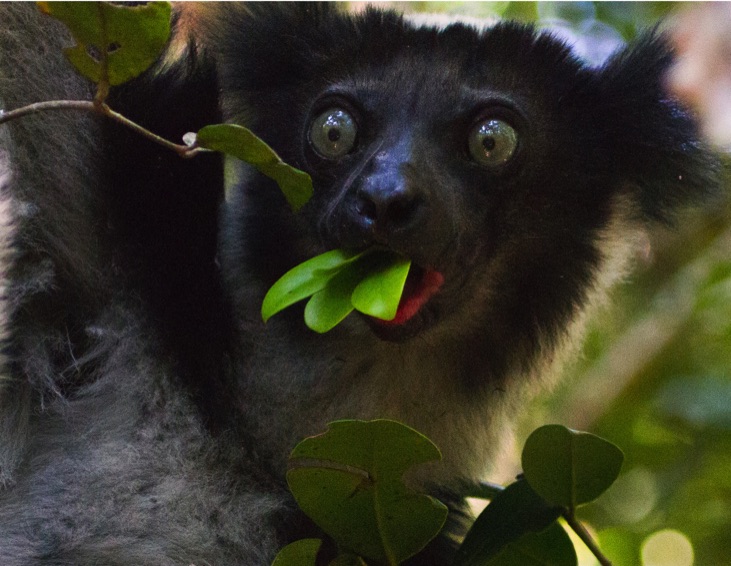
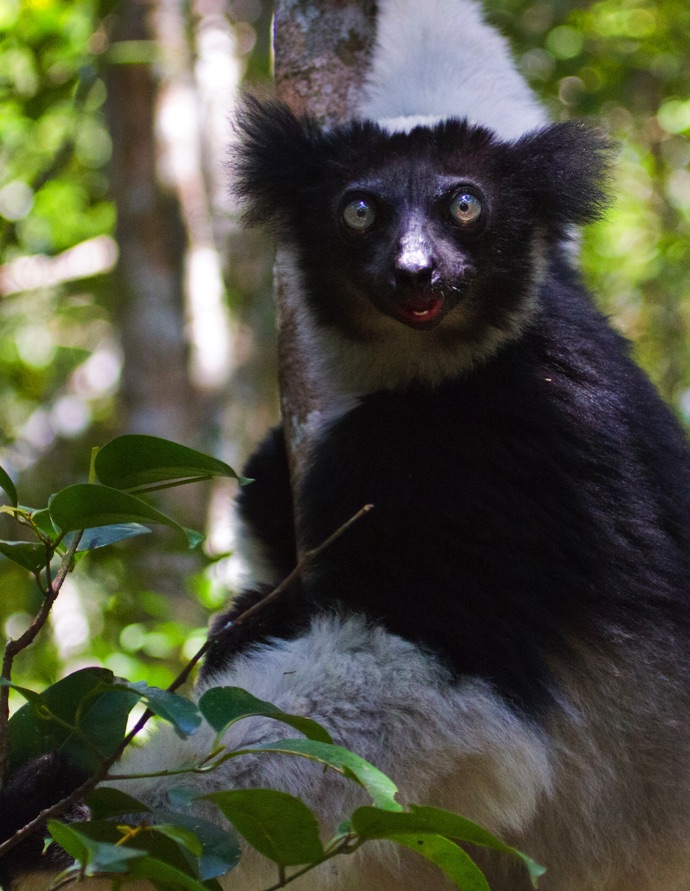
The Indri is the largest and most vocal lemur.
Their haunting calls resound through the rainforest.
They can weigh up to 20 pounds.
Today there are 90 species of lemur and they are all endangered due to the rapid destruction of their forest habitat for agricultural development, cattle grazing and human settlement.
ANDASIBE-MANTADIA
NATIONAL PARK
The song proclaims their wearabouts and territory and warns others to keep away
The Indri
Red-Fronted Lemur
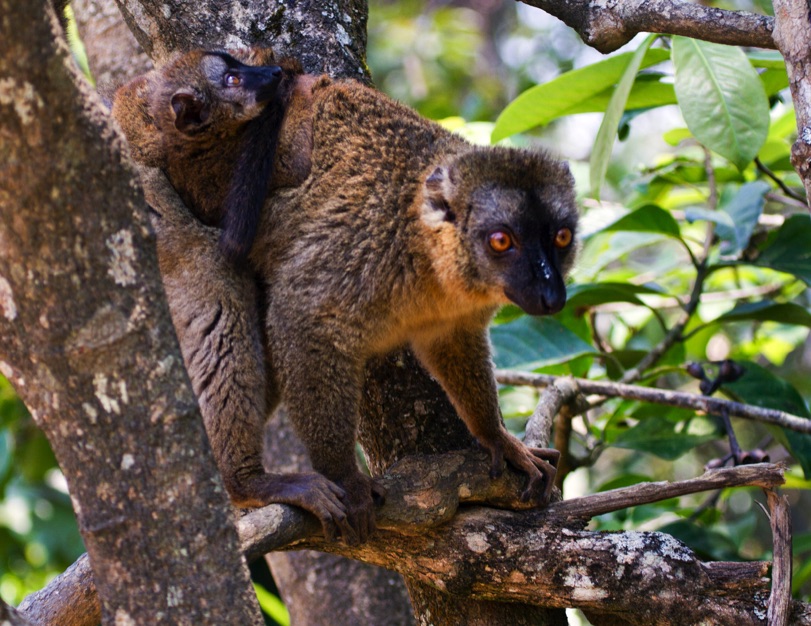
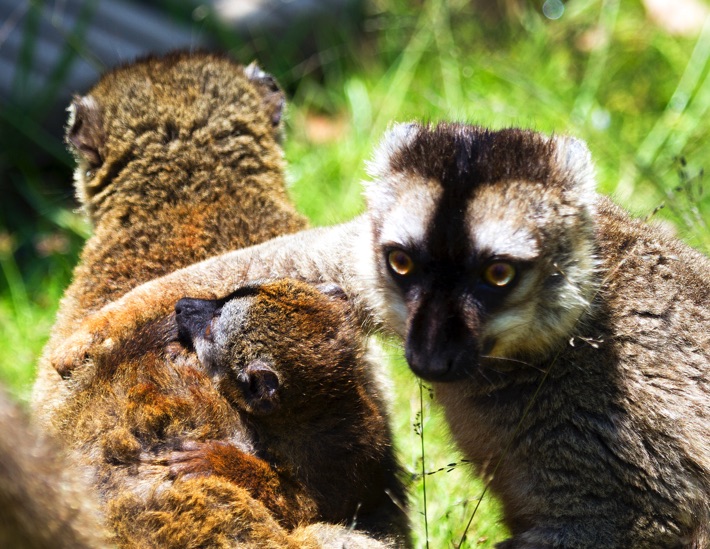
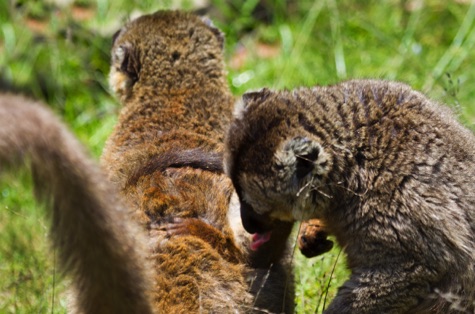
Lemurs are very clean animals and spend a lot of time grooming themselves and each other. The live in small family groups
Here the male is grooming the infant by licking and putting a protective arm on him
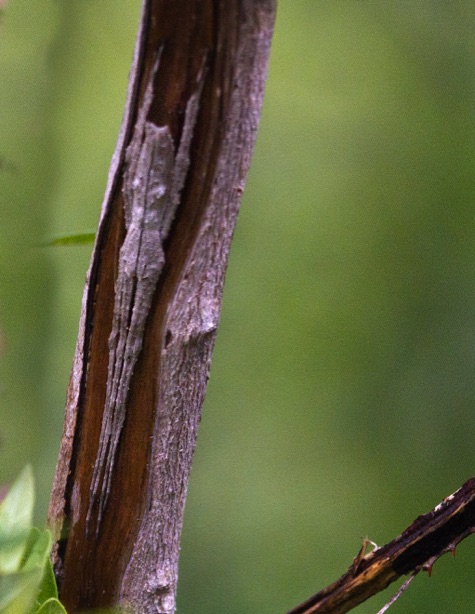
Deinopis Spider
Madagascar is home to some very unusual critters.
Many specialize in camoflage
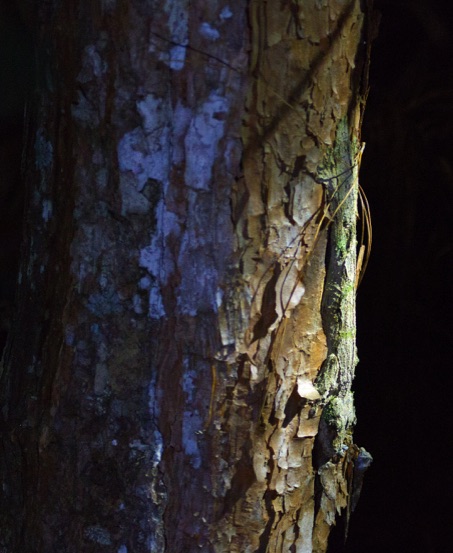
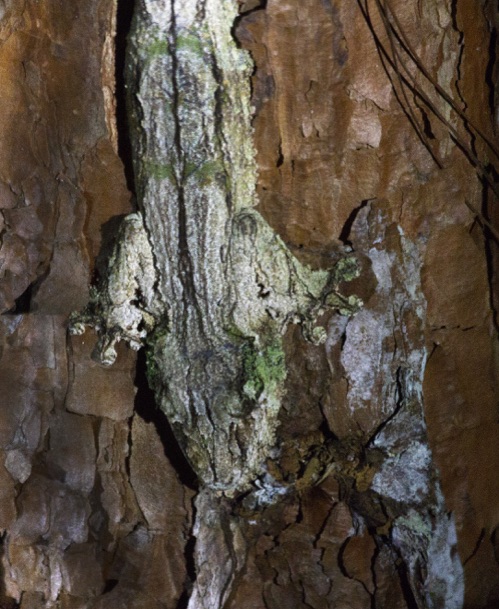

Mossy Leaf-tailed Gecko
The Deinopis does not weave a web. It is a net casting spider. It weaves a small net which it holds with its long two pair of legs. Passing prey is then captured by dropping the "net" over it.
Its name refers to the mossy-like camouflage patterns and colors of the gecko's skin designed to resemble tree bark. It has the ability to change its skin color to match its surroundings.
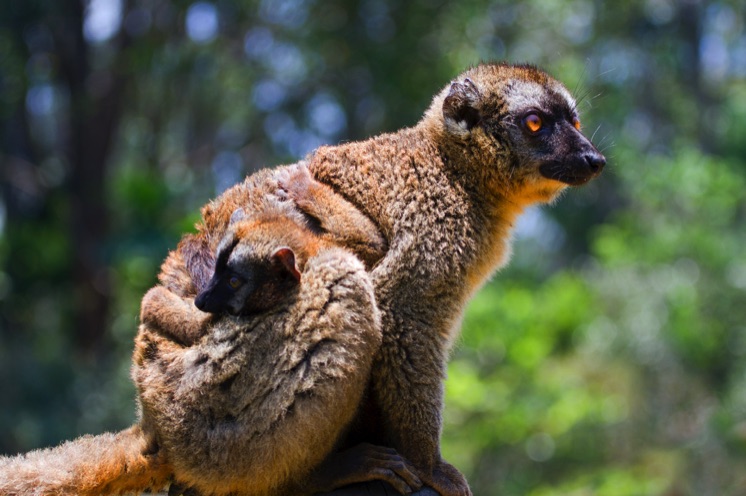
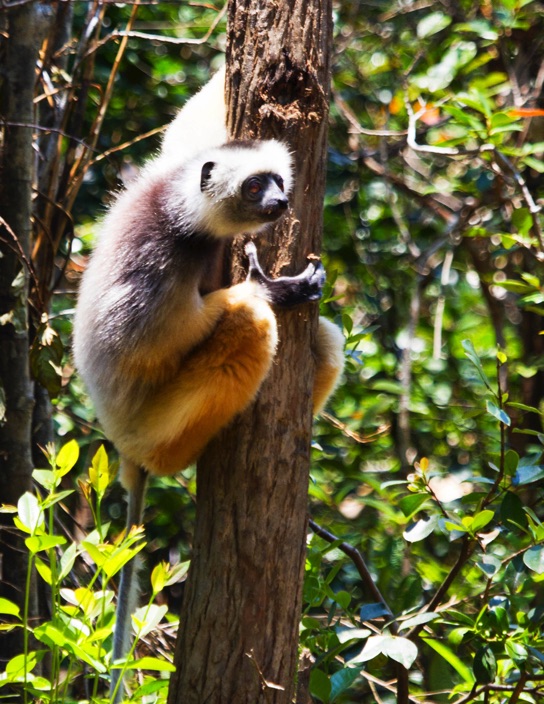
Diademed Sifaka
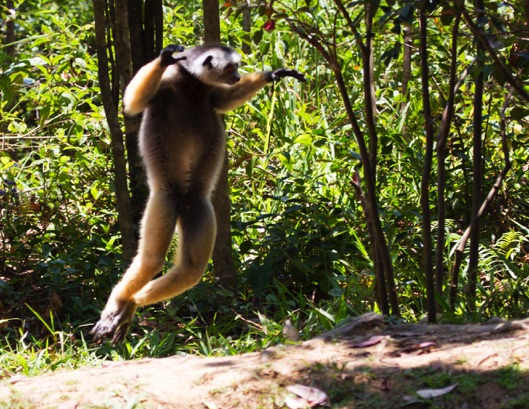
They spend most of their time in the trees, but don't get around in the same way that other lemurs do on the ground. Sifakas remain upright and make great leaps sideways.
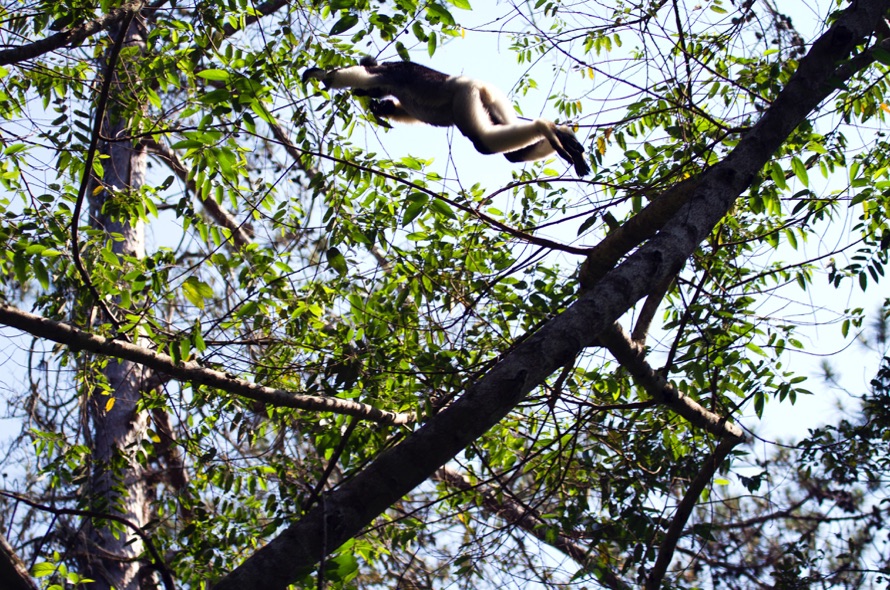
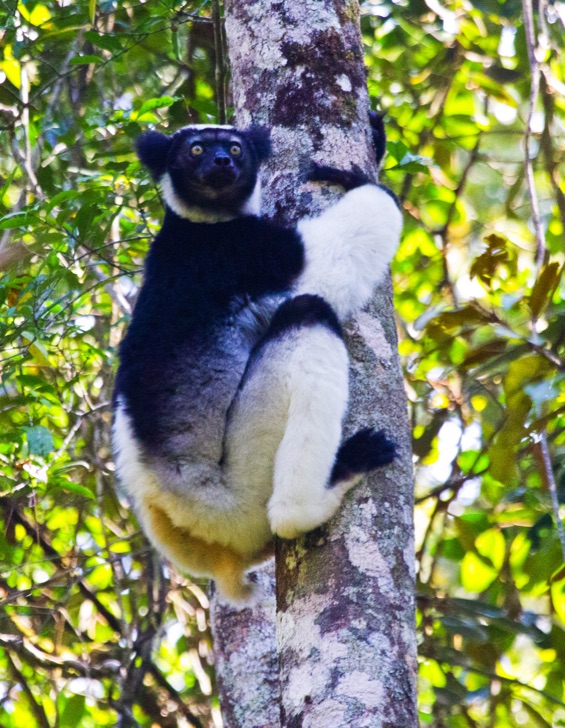
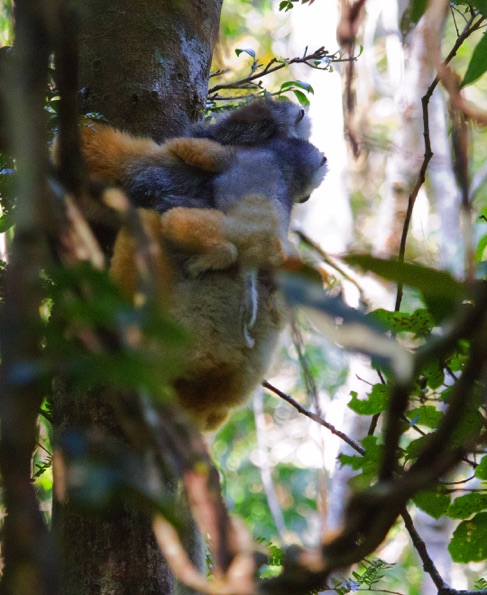
Lemurs leap quickly from tree to tree by jumping with their powerful hind legs. In this way, they clear distances of over 30 feet.
Sifakas live in small family troops of three to ten animals. It is believed that only one female from each group breeds, while males may move from group to group.
These vegetarian primates eat leaves, flowers, fruit, buds, and tree bark—sifakas have been known to eat about a hundred different plants. They forage during daylight hours and go to sleep aloft before sunset.

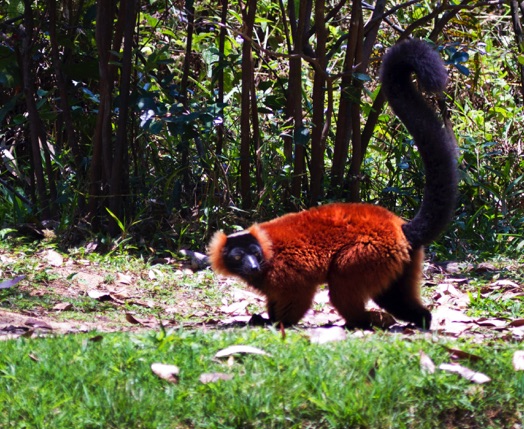
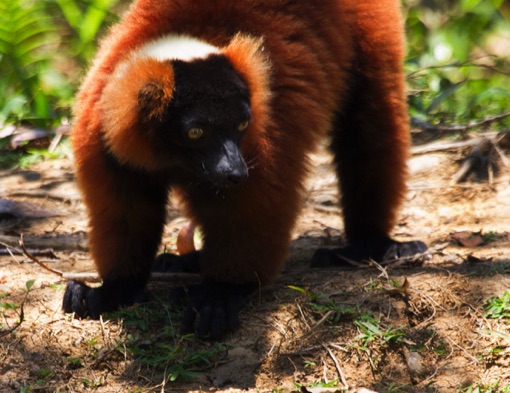
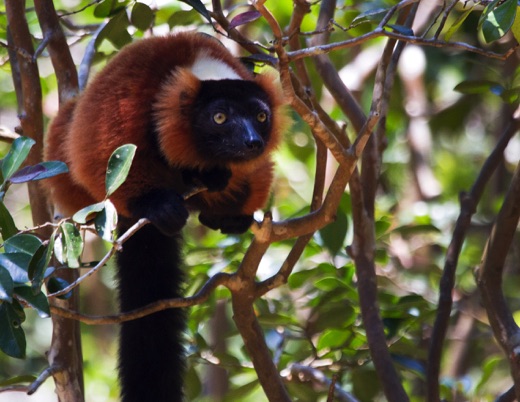
Red-ruffed Lemur
The Red-ruffed doesn't seem to enjoy the Sifaka jumping over him.
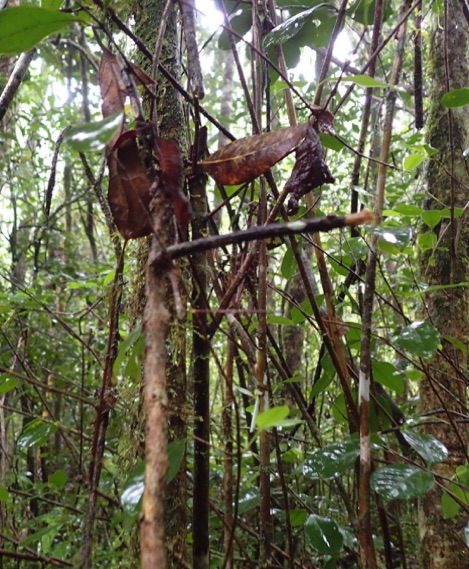

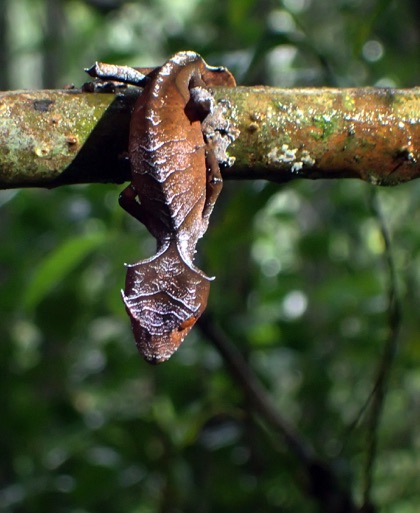
A favorite game of the guides was to point out a tree and see if we could find the critter.
Satanic leaf-tailed Gecko
This species has large eyes without eyelids.
They have sticky toes and long, broad and flat, leaf-like tail.
It can disguise itself in its environment. The body can blend and mimics dead leaves in its habitat so that it cannot be identified by its predators. The body is twisted with a patterned skin, while the tail looks astonishingly like a leaf.
It's in the tree above.
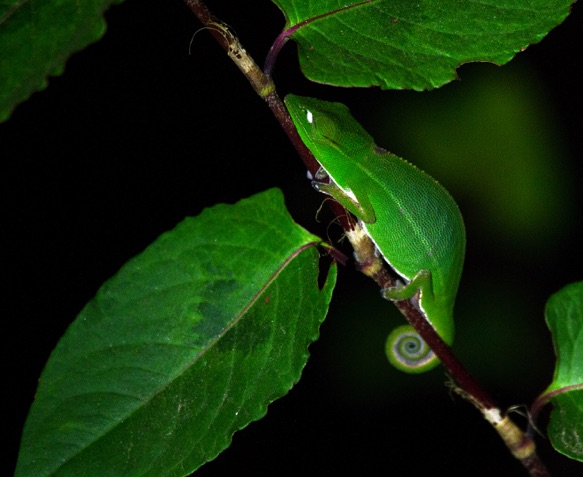
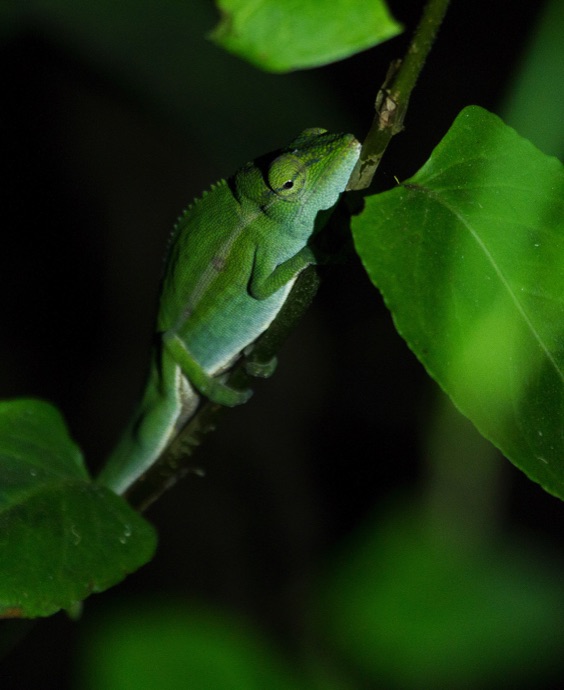
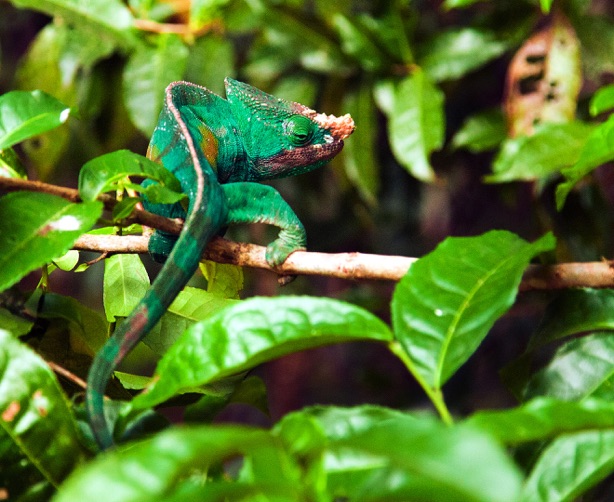
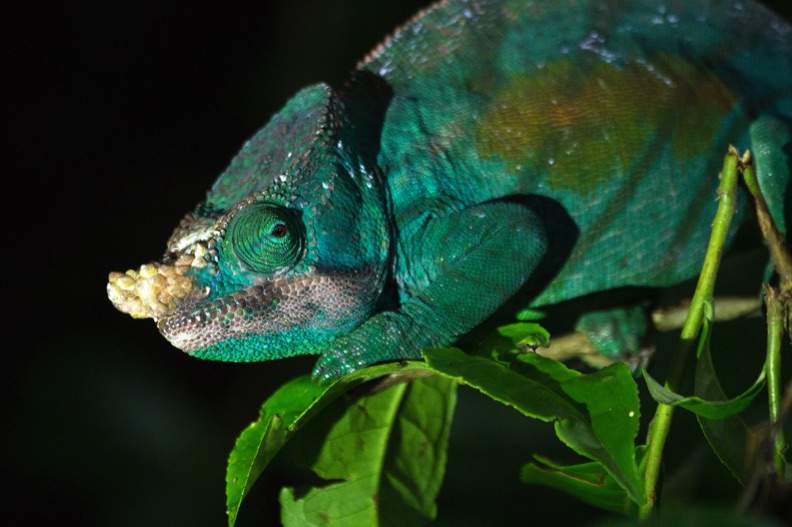
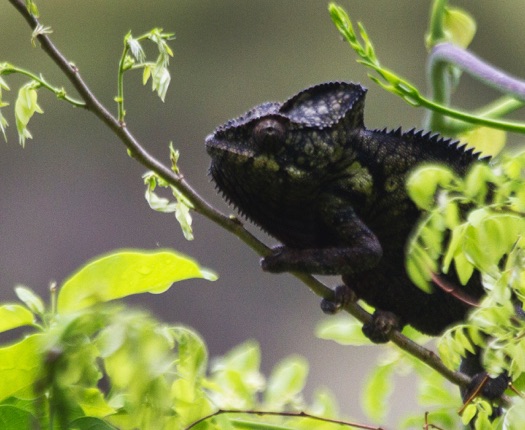
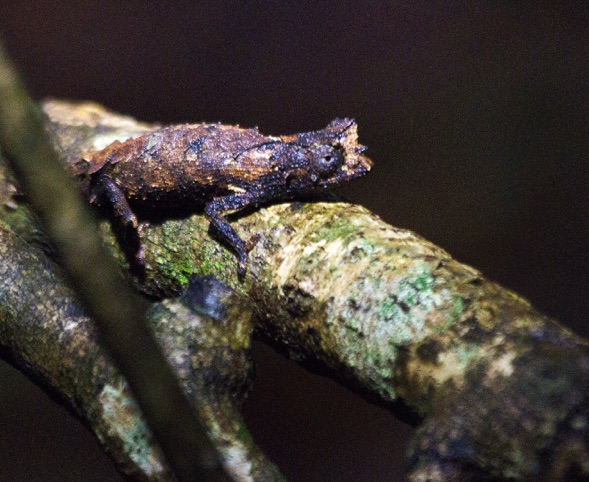
Parson's Chameleon
Oustlets Chameleon
Stump-tailed Chameleon
The Belly-band Chameleon
Chameleons can disguise themselves by changing their skin colors to blend in with their environment.
There are nano crystals called iridophores under the skin of chameleons that are responsible for the species' ability to adapt its pigmentation to its surroundings.
The crystal realign to refect different spectrums of light depending on their surroundings.
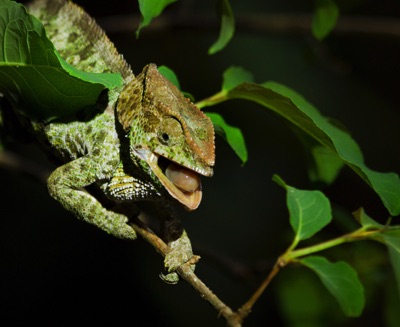
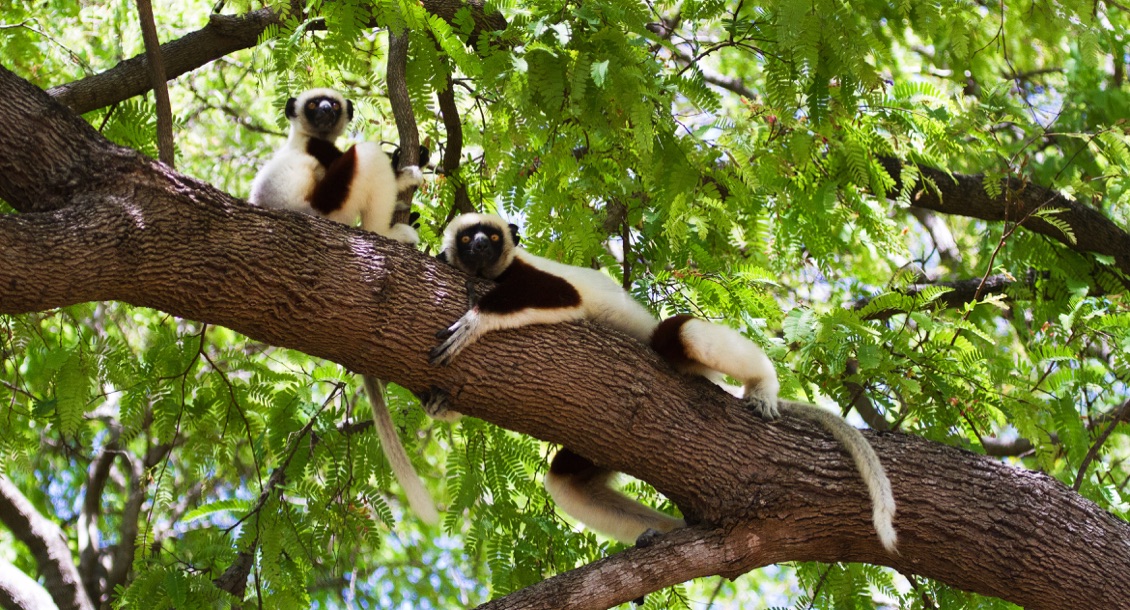
Coquerel's Sifaka
Anjajavy Forest
Our last stop was Anjajavy, a 11,000 acre reserve. No roads to it. As you can see their International Airport is rustic, dirt runway, our Uber was waiting
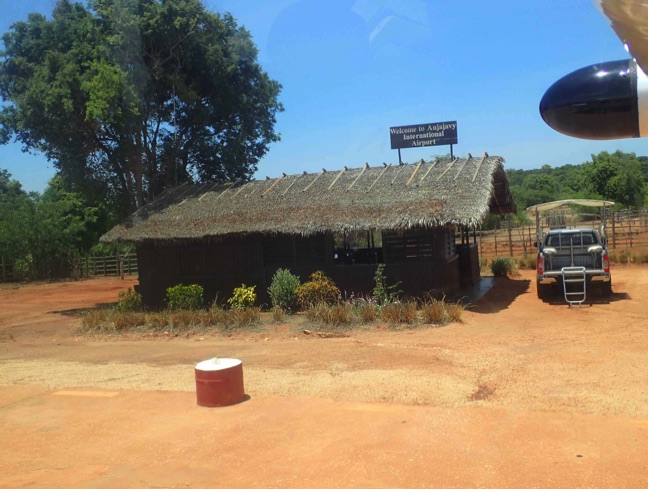
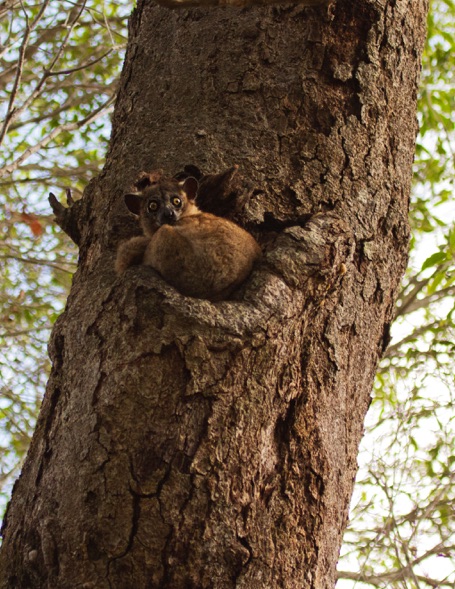
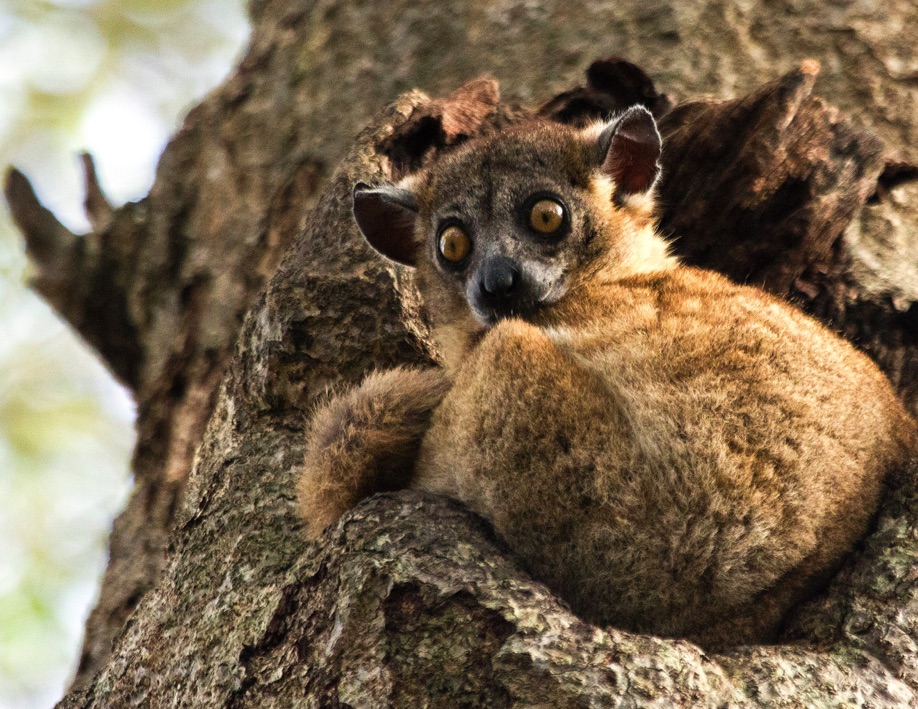
Zombitse Sportive Lemur
Zombitse-Vohibasia
National Park
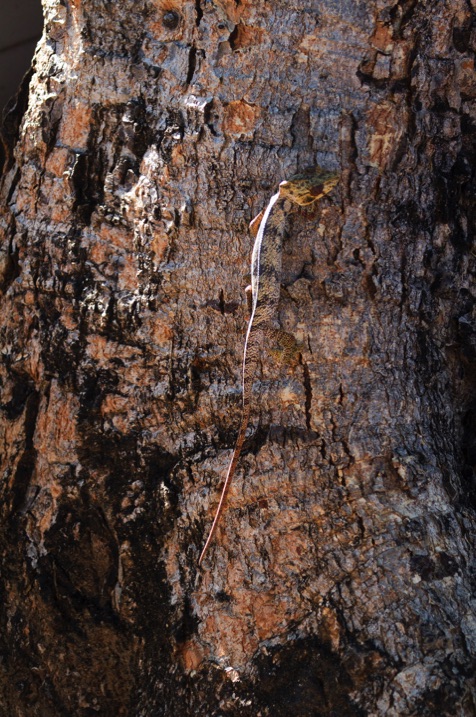

It's really something to see these Sifaka Lemurs move about on the ground. They don't walk, they only hop.

Is this just a stick?
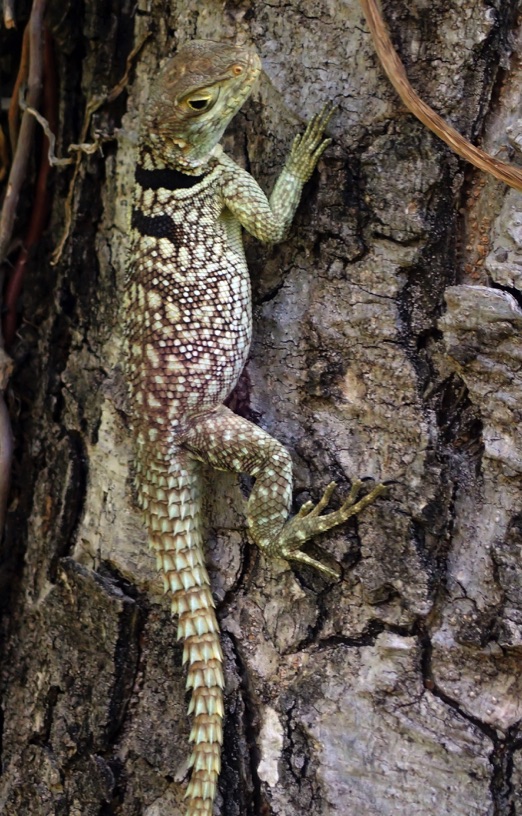
Collared Iguana
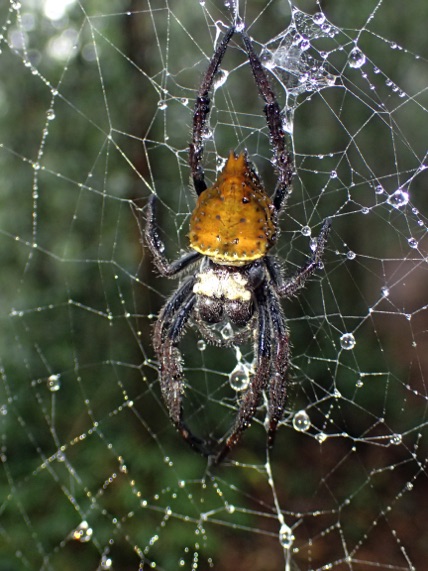
Orb Spider
Nat Hab
Expedition Leader, Richard De Gouveia
Malagasy Guide, Lalina Ramarosoa
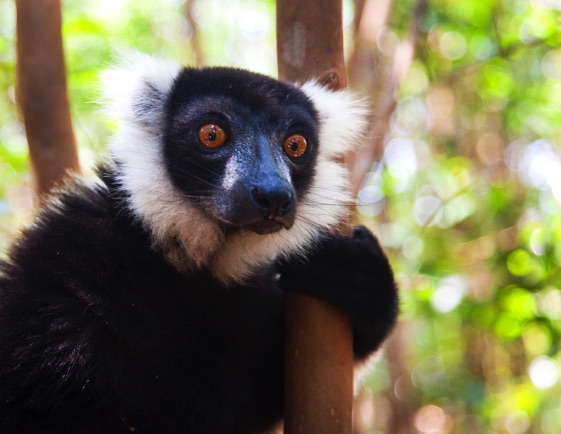
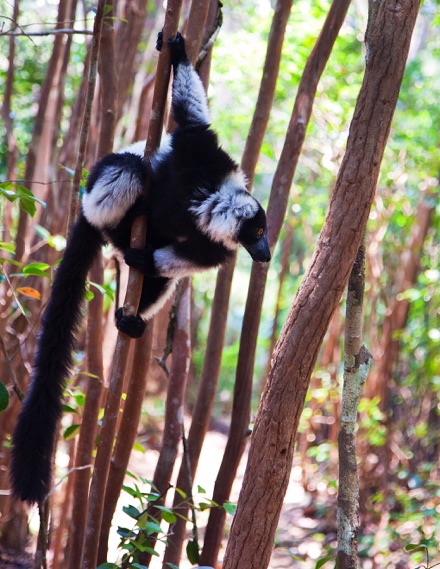
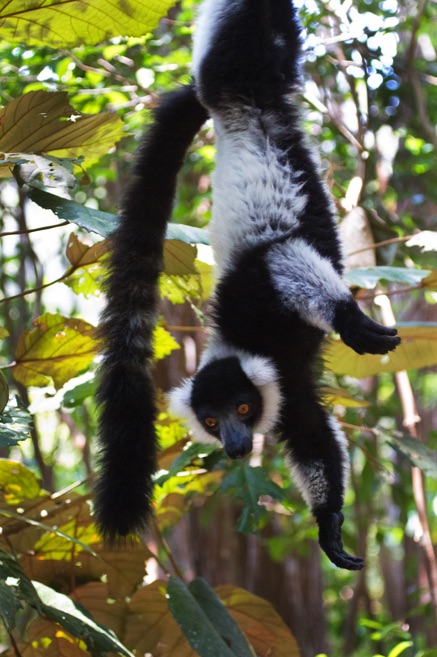
Black & White Ruffed Lemur
Lemur Island is a home for turned in or confiscated pet lemurs, injured, rehabilited lemurs. Lemurs will not cross water. The island is a sancturary for these animals that don't have the skills to survive in the wild.
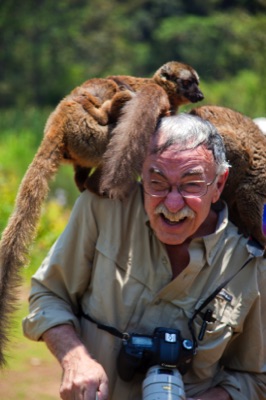
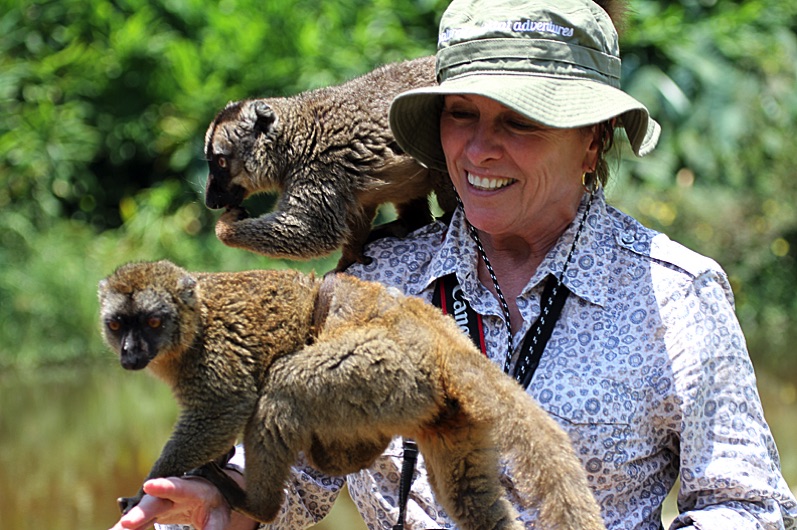
As former pets, these Lemurs were somewhat friendly.
The one on my shoulder even brought her baby with her.
Good thing there's rules against having pet lemurs,
Cheryl seems to be picking one out.
Please, All images are copyrighted by Jim Edwards and may not be reproduced in any form including the copying or saving of digital files without written permission or a contract from Jim Edwards Wildlife Photography.
Contact e-mail: edwards617@aol.com
These gentlemen shared their extensive knowledge of Madagascar with us.
Richard is a professional photographer and did everything possible to improve my photo skills.
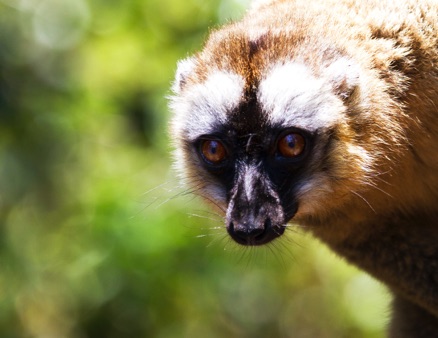
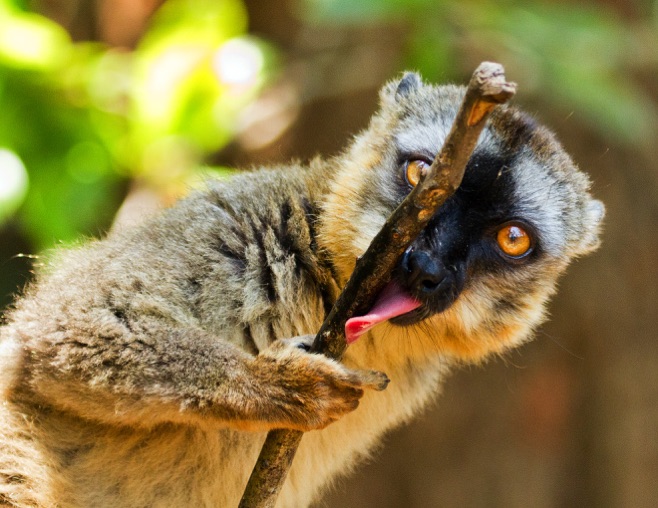
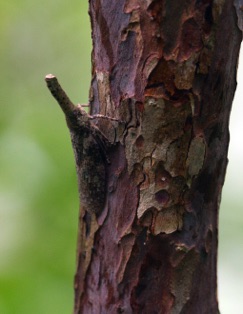
Lantern or Snout Nosed Bug
Verreaux's Sifaka
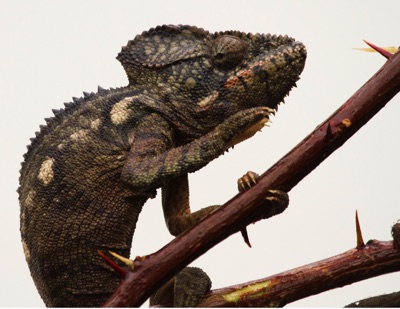
Zombitse-Vohibasia
National Park
Ninety percent of Madagascar's original forests
have been lost due to "slash & burn".
Clearing land for agricultural purposes, mainly rice fields, to feed a fast growing population.
Sadly, just 10% of the animal and plant habitats remains. Most of the species are endangered
Giant Spiney-backed Chameleon
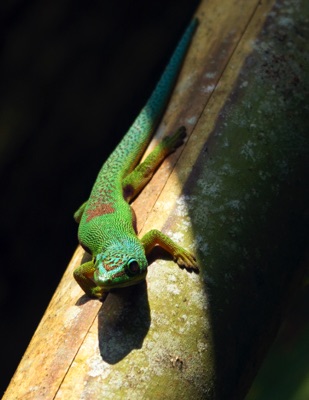
Standing's Day Gecko
There's a Gecko in the tree to the left.
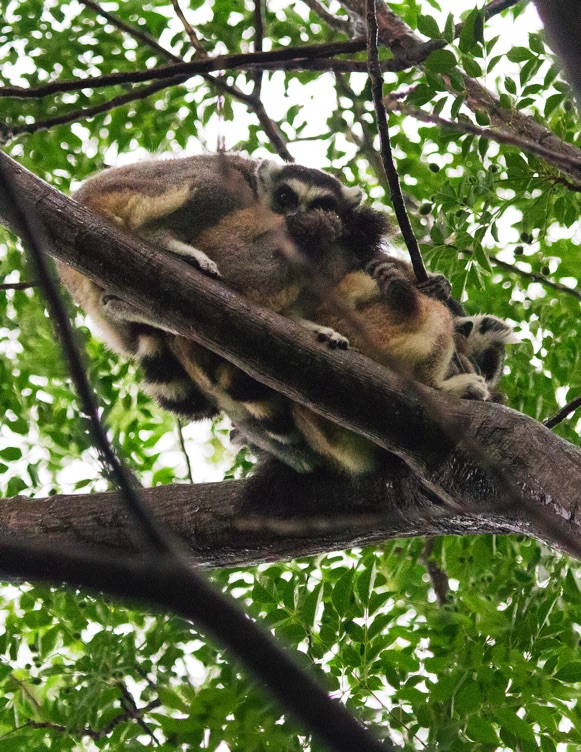
Ring-tailed Lemur
Lemurs don't swim or cross water.
They don't like rain.
They live in a rainforest and we found this group on a rainy day.
They form a ball high up in the trees
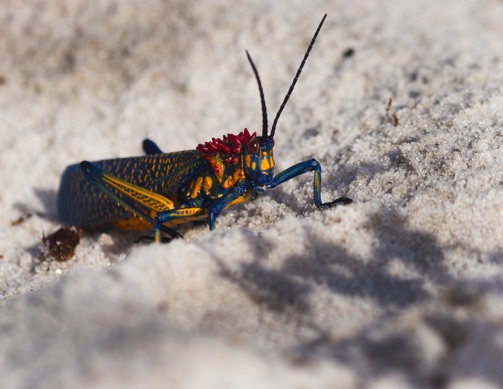
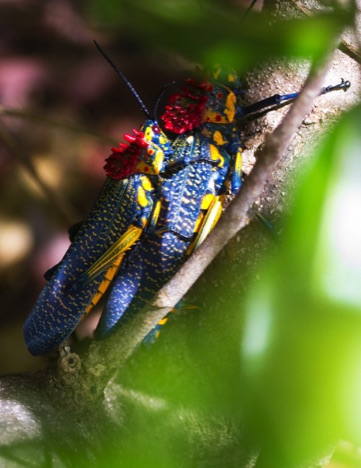
Rainbow Locust
A tender moment
Giant Land Tortoise
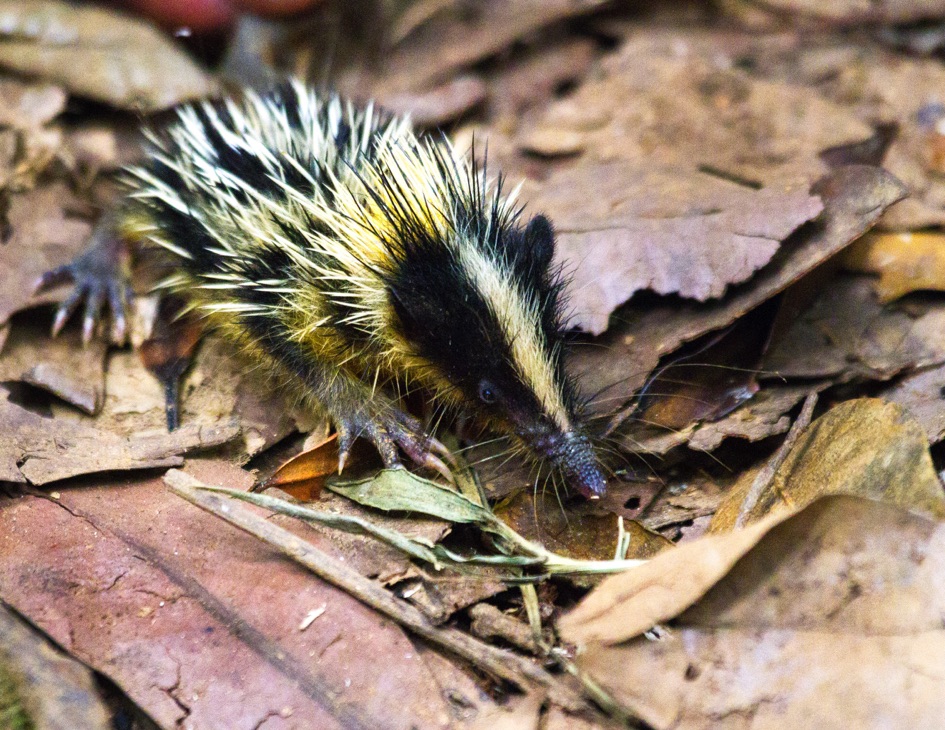
Lowland Streaked Tenrec
The Tenrech has hard keratinous quills that act as a sounding device and is thought to be used for communication between mother and young and/or a warning signal to predators. Movement of these quills causes the tips to rub together and create a high frequency sound.
They can also used for defense.
This an untouched up iPhone photo.
The saying is, "the best camera there is, is the one you have with you".
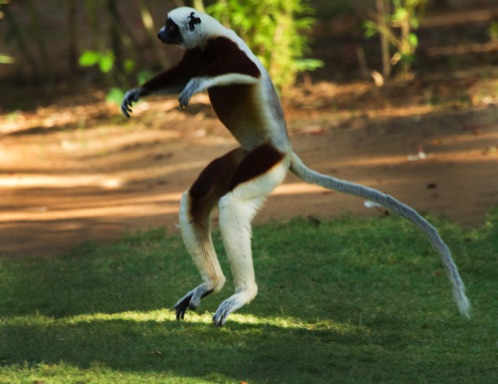
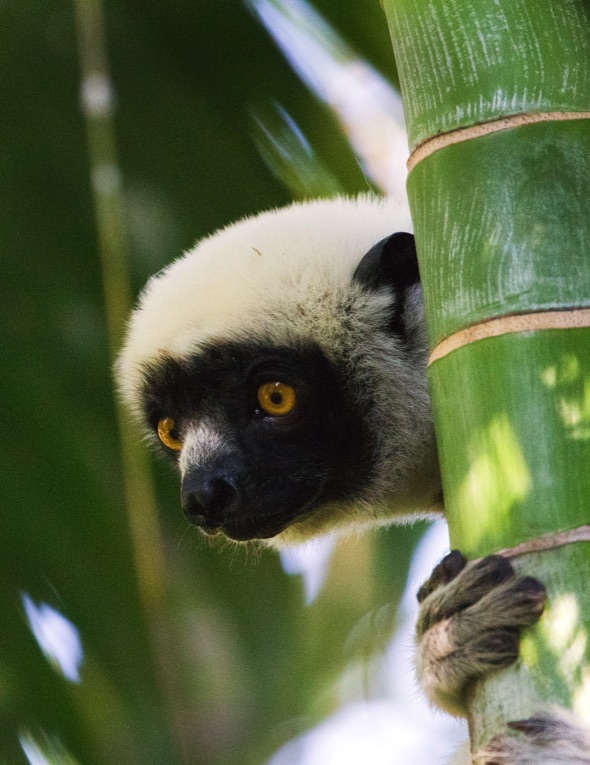
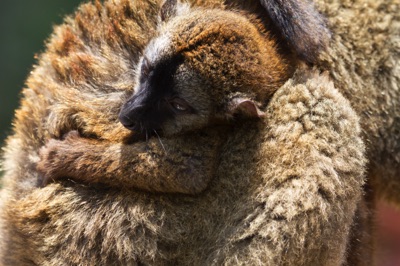

The Sportive Lemur can weigh up to 2 pounds. Their life span is about 8 years.
The smallest primate in the world is the Mouse Lemur,
weighing 1 to 4 ounces.
There is an extinct species of Lemur that weighed over 200 pounds.
The Latin word lemures means “ghost.” Malagasy people have traditionally associated these primates with spirits because they are active at night,
and because of their eerie, large-eyed stare.
Nocturnal lemurs have large, sometimes enormous eyes with large pupils and rod-rich retinas to inhance night vision.
The Baobob Tree
The Baobobs are succulents and can store
over 25,000 gallons of water in their trunks.
They don't have their first fruit for over 90 years,
depending on the water supply.
The life span can be 3,000 years.
The Baobob can be 100 feet tall
and over 150 feet around, 50 feet in diameter.
Africans call it the "Tree of Life" and have known about the health benefits of eating its fruit and leaves for centuries. Baobob juice is drinkable and high in Vitamin C.
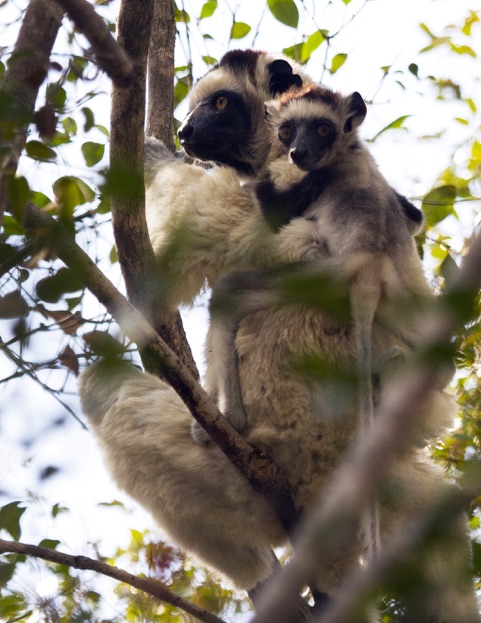
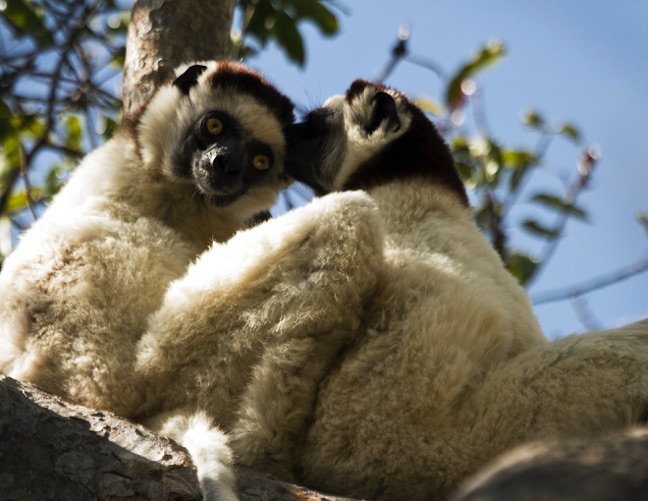
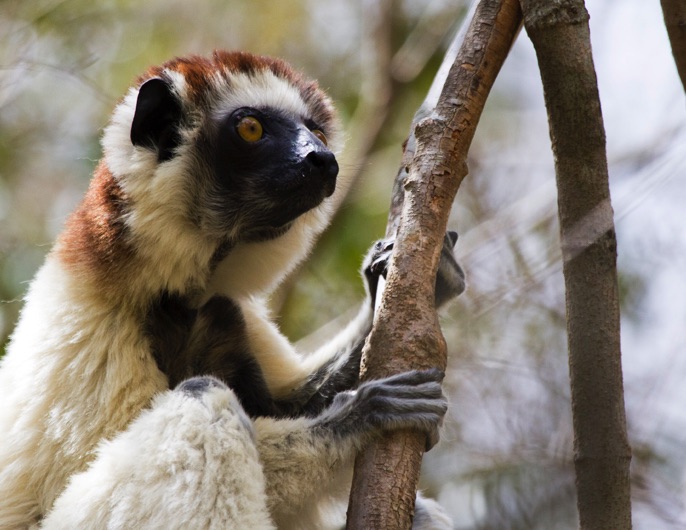
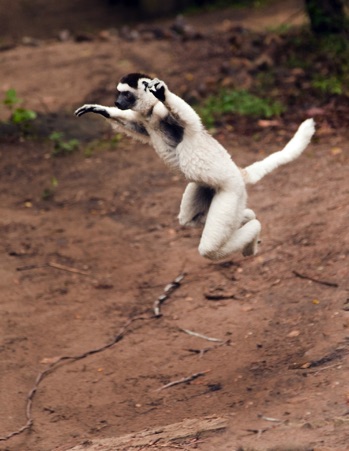
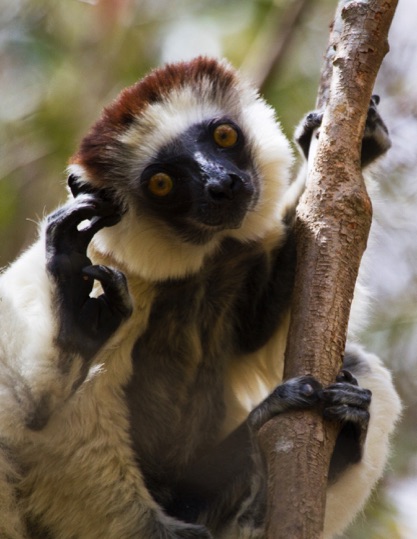
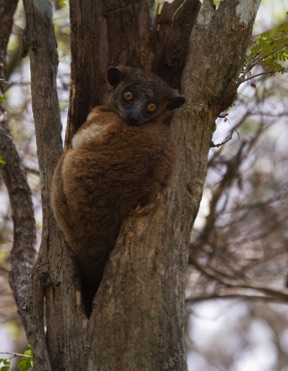
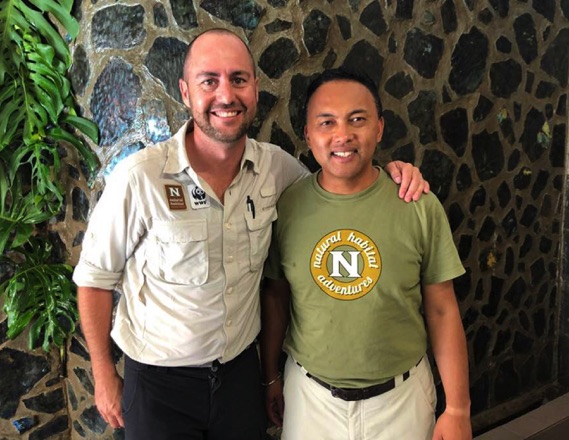
Infants cling to their mothers' bellies for the first three weeks, shifting only to nurse. At about three weeks old, the young lemurs begin spending time riding, jockey-style, on mom's back
Nursing continues but declines until the infant is weaned at approximately four to five months of age. Males will assist the females with child rearing.
The Red-fronted life span is 20 to 25 years
They make life long mating partners in their small families. They will only seek a new partner upon the death of the one they have been with. They often form families that have many generations living in them.
Unlike other Lemurs, the females keep their infants in nest 50 to 60 feet above the forest floor.
Ruffed lemurs are also the only primates with litters of young, 2 to 6 in a litter.
It is estimated that 65% of young do not reach three months of age, and often die by falling from the trees
They have a distinctive white ruff around their necks.
They are known as the world's largest pollinators.
They have the unique ability, among pollinators, to open the traveler's tree flowers. While the lemurs benefit by eating the nectar within the flowers, the tree benefits from the pollination that occurs when the pollen sticks to the lemurs' faces and gets transported to the next tree.
The total population number of the Black-and-white ruffed lemur estimate, 1,000 to 10,000 individuals. This species' numbers are decreasing and it is classified as Critically Endangered
The Indri is listed as Critically Endangered and the population is decreasing.
Madagascar is the forth largest island on the planet.
Located in the Indian Ocean, it's about 250 miles east of the African continent.
Madagascar has a population of over 25 million and has the fastest growth rate in the world at 2.7% It is also one of the poorest countries in the world
The Killers in Madagascar
#1 Malaria
#2 Diarrhea
#3 Lung disease
Cooking is done with charcoal. Trees are cut down to make charcoal. All the cooking is done inside the home, with the smoke filtering up through the thatched roofing. Thus the lung diease, even in the young.
Notes on Madagascar
a beautiful country with beautiful people
70% of the population has no electricity, no refrigeration.
They rely on subsistence farming of rice, their main diet.
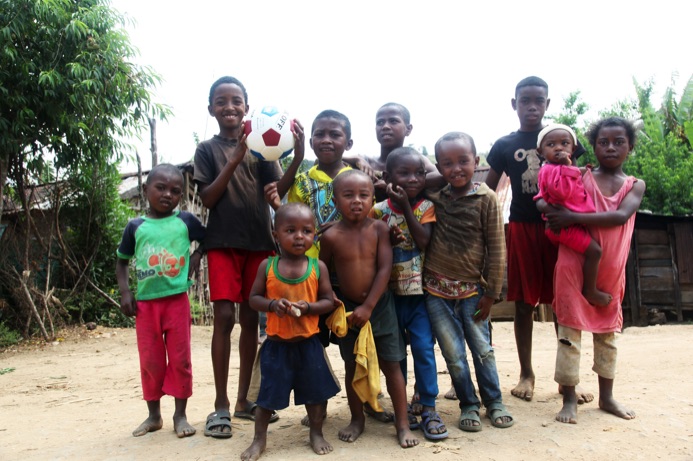
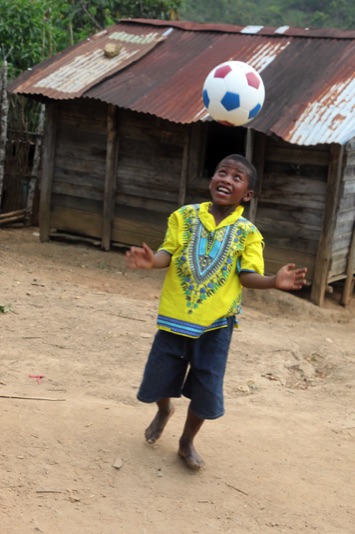
Our photo expedition to Madagascar included drives through small, struggling rural villages. Our NatHab guides often travel through these villages and will bring donated clothing, but on this day they brought them a soccer ball. These kids have very little, and expect very little. On this day they were very thankful for this gift that will keep on giving.
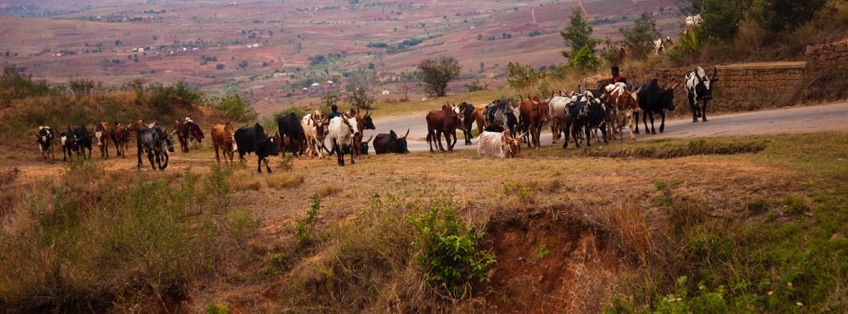
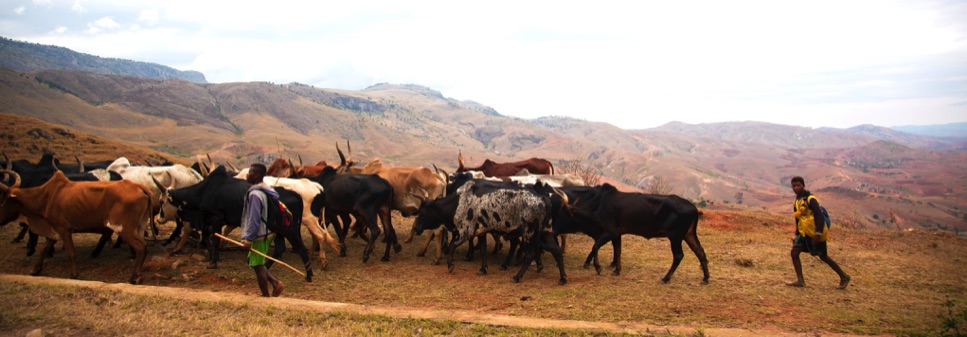
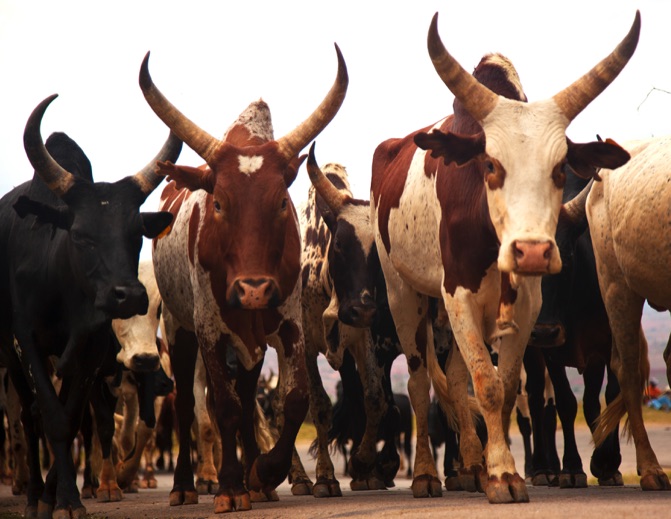
Zebu are a major part of Malagasy life. In some cultures, a man's wealth is measured by the number of cows.
Zebu are driven from the west side of Madagascar to the east coast ports, over a hundred miles, a trip that takes several months.
Herders are hired to drive the zebu and will stop at viliages along the way and trade a zebu for rice and supplies.
The zebu are shipped to China,
were it a delicasy.
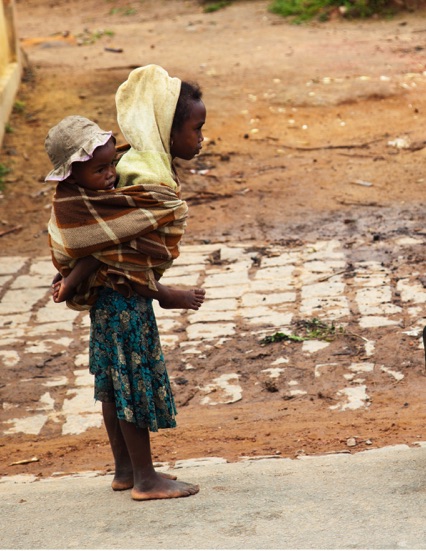
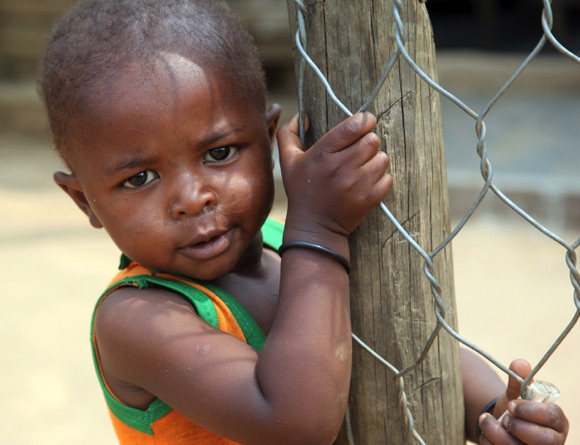
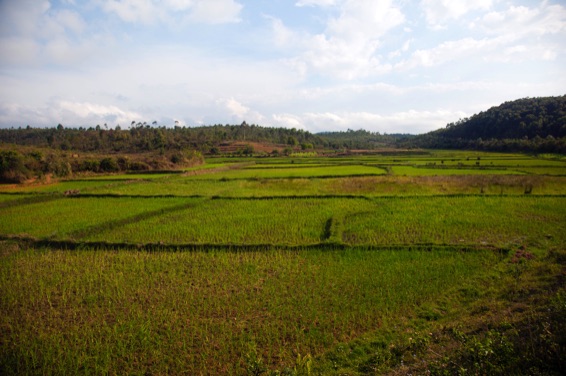
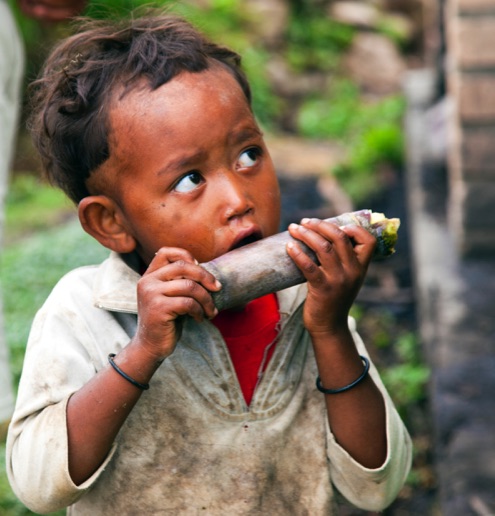
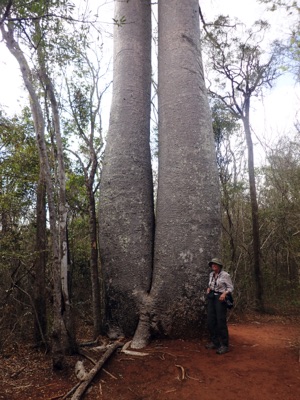
Family's have their own rice paddies and they are hand tilled between crops, hand planted and weeded.
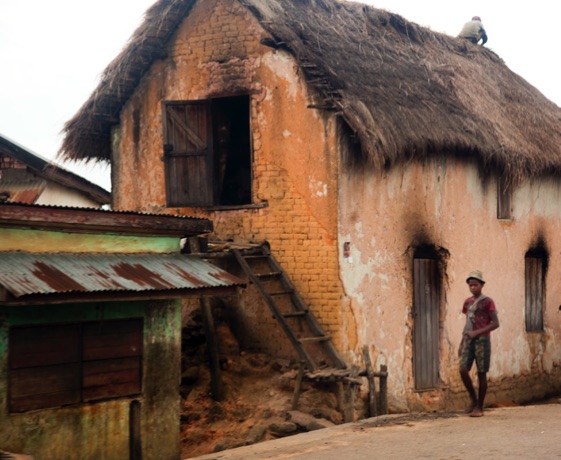
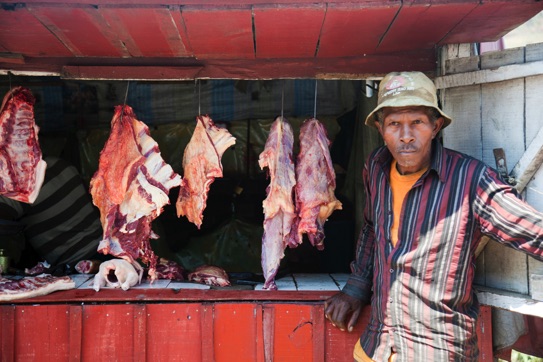

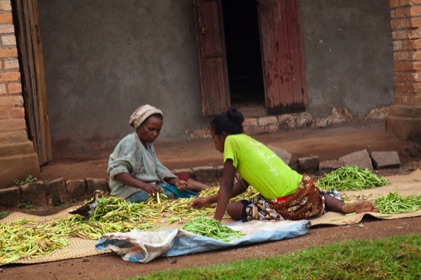
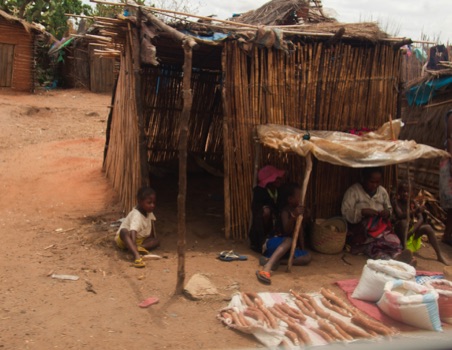
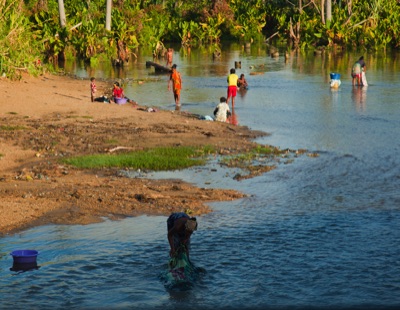
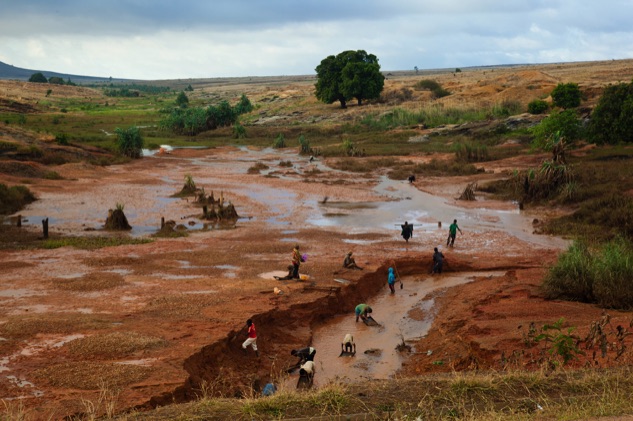
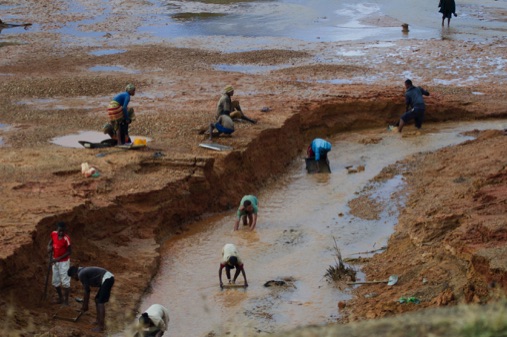
With no electricty or refrigeration, they must shop everyday.
Laundry Day
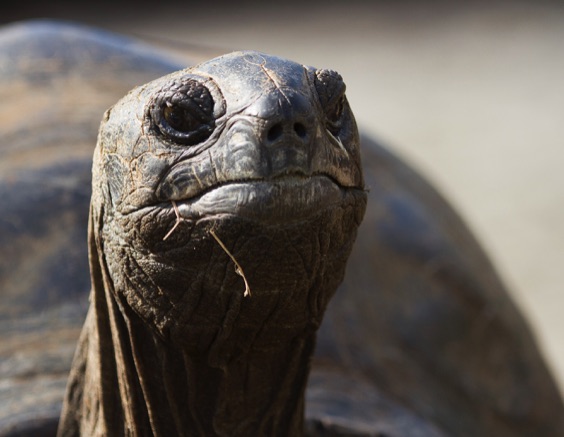
Discovery of Saphires
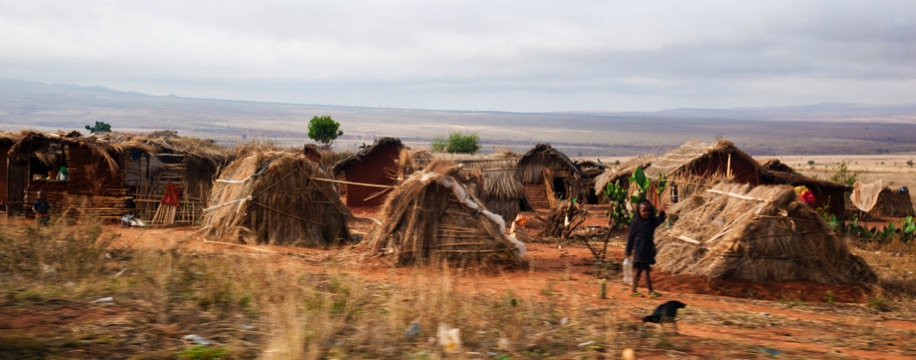
The major sapphire deposits discovered in 1998 in the tiny village of Ilakaka in southern Madagascar came as a surprise. By 2007 Madagascar had become the largest producer of sapphire in the world.
The saphire rush of thousands
caused the rise of little communities.
Mining continues today.
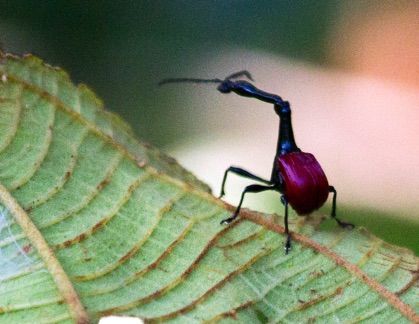
Giraffe-necked Weevil
The neck of the male is three times longer than that of a female. Weevils use this unique adaption to battle for a mate and build nests—females bend and roll up large leaves, laying a single egg in the tube.
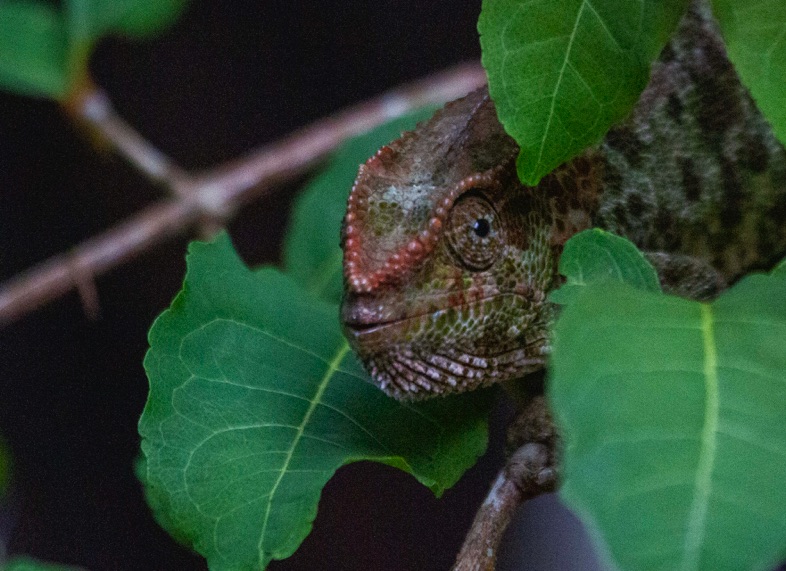
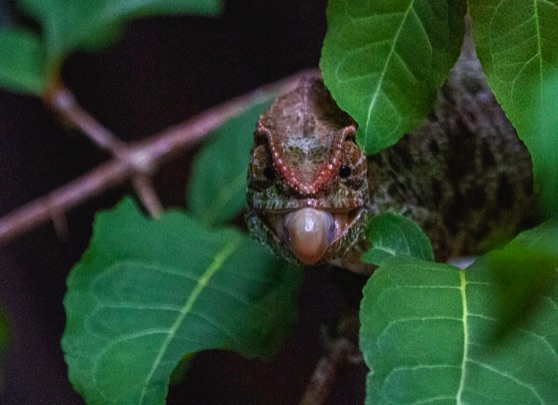
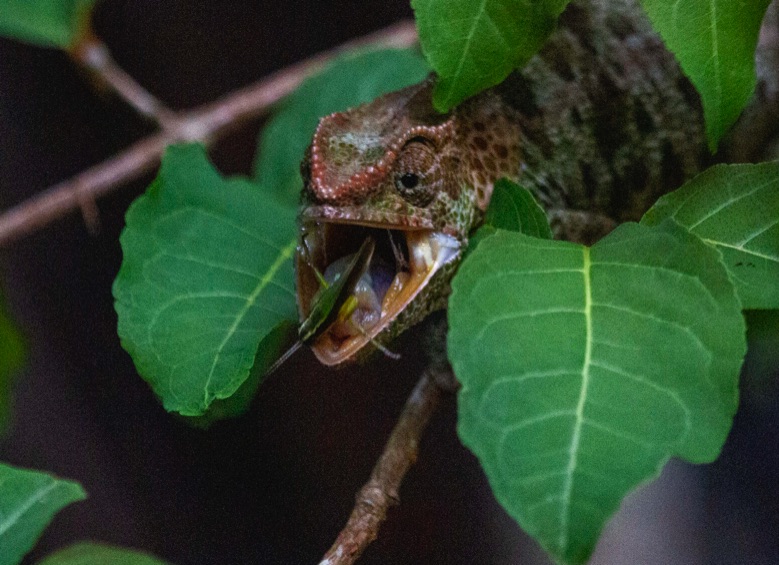
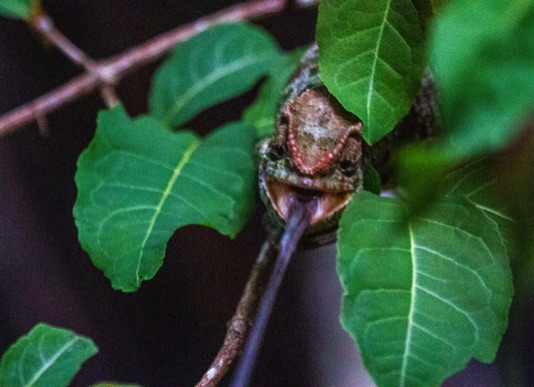
There are 96 species of chameleons that inhabit the island of Madagascar. I believe this is an Oustalets's chameleon (Furcifer oustaleti) which is endemic to Madagascar. The chameleon's can be twice the length of the body. They are able to ballistically project their tongues to capture prey located some distrance away.
Here he brings in an insect.
Andasibe-Mantadia N.P.
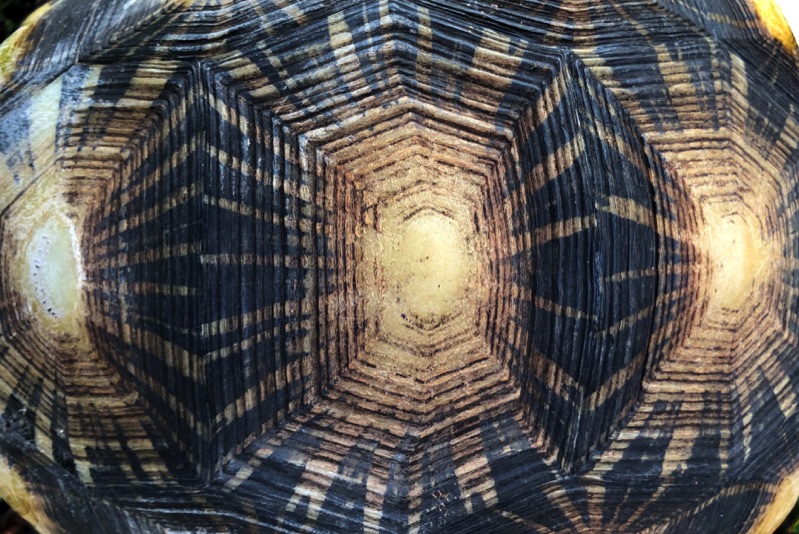
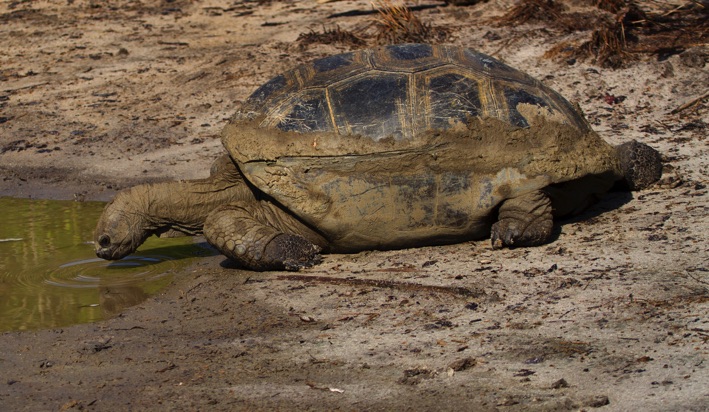
Patterns in Nature
The Spider tortoise, a critically endangered species endemic to Madagascar. Named that because of the spider web appearance of the shell.
2019
The chameleon can accelerate its tongue from zero to 60 mph in just 0.01 seconds